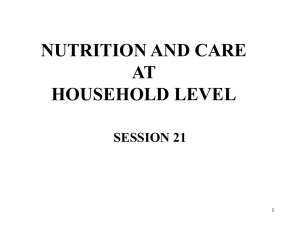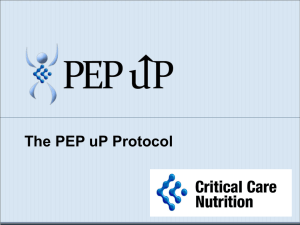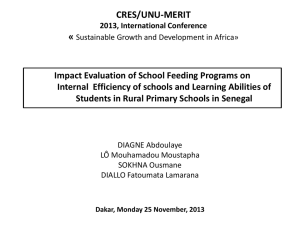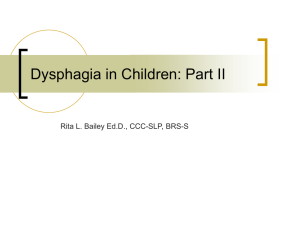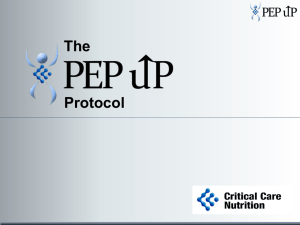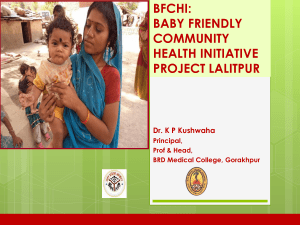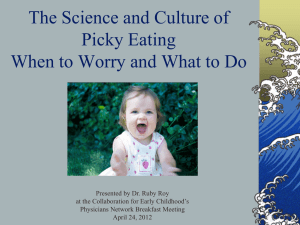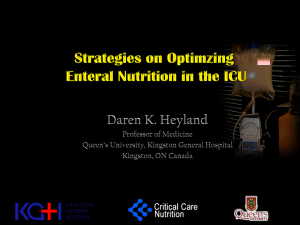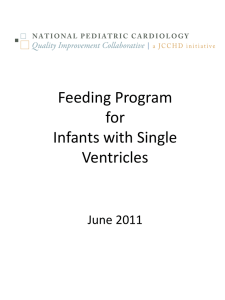Practicalities of feeding cardiac babies
advertisement
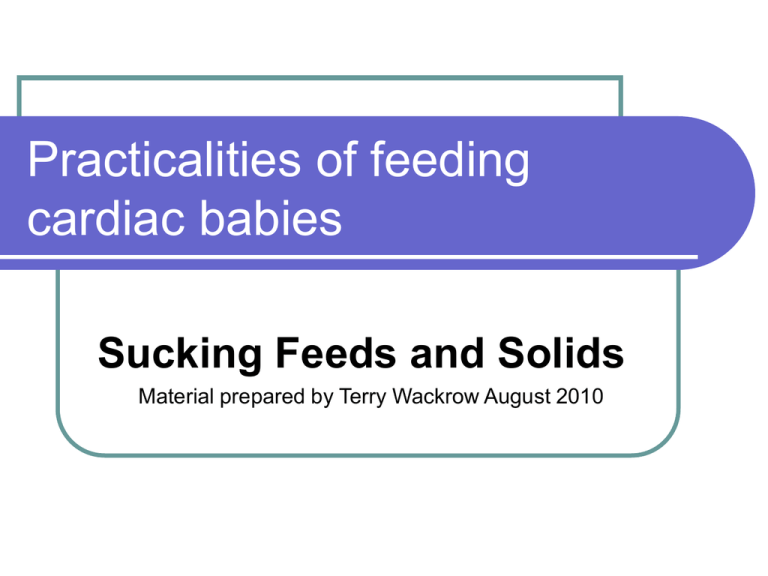
Practicalities of feeding cardiac babies Sucking Feeds and Solids Material prepared by Terry Wackrow August 2010 An effective feeding plan considers: SAFETY - the feeding plan should support and maintain the child’s health OPTIMAL NUTRITION - this is essential as the feeding process is high energy output FARSIGHTED - the implications of current treatment on future feeding and oral functions must be considered Feeding impacted by: [Chart adapted from: Factors that may affect feeding the child with neurological impairment (Reilly et al in Southall, A and Schwartz, A (eds)(2000) Feeding problems in Children: a practical guide. Oxford. Radcliffe Medical Press p154) ] Oromotor / pharyngeal function Motor control Posture Communication Fear Behaviour: Fatigue; Endurance State Maintenance Social factors Aversive experiences Vision Hearing Tactile Developmental levels Cognitive level Drugs FEEDING GOR Constipation Neurological Issues Cardiac Issues Cardiac specific feeding issues Infants and children with cardiac difficulties frequently have feeding difficulties that result in failure to thrive Poor endurance, fatigue and high nutritional needs are key limiting factors Associated problem areas inco-ordination of swallowing poor oral feeding skills increased respiratory effort Which can lead to increased risk factors for aspiration Ongoing difficulty with suck /swallow / breathe synchrony can be throughout a feed can develop during a feed often related to endurance and fatigue problems Persistent stress signs during sucking feeds have a huge impact on feeding skills increased sweating colour change changes in state increased respiratory effort persistent feed related desaturations coughing and /or choking increased heart rate during feeds Use a syringe with caution: introduce fluid slowly and allow baby time to swallow If a baby is refusing to feed, look in the baby’s mouth Check for thrush Look for signs of teething thrush teething Breast Feeding Breast Feeding is the GOLD STANDARD Breast feeding support is from the Lactation Consultant If there are oro-motor difficulties or queries regarding swallow safety, the SLT becomes involved Bottle Feeding Bottle feeding, like all feeding, is a learned process There are always two parties involved: it is a feeding DYAD Communication within that dyad is essential Feed to early cues A baby gets stressed with feeds for a reason All feeds should be enjoyable for both parties Troubleshooting with bottle feeds Check state of teat: These teats need to be replaced Split x-cut Deteriorated teat texture Check technique Teat part empty taking in air Poorly supported Bottle weight on mouth Look for bubble movement in the teat Check for anterior loss Chin support can assist when baby fatigues Utilise neonatal reflexes that support feeding eg palmar grasp flexed position Introducing solids Textures and viscosity relating to swallow safety is SLT responsibility Calorie intake, volumes, dietary restrictions are dietician responsibility Cultural considerations around food and drink should be known and implemented by all involved with the child NOTE Ice-cream and jelly both class as liquids so are NOT suitable if a child has swallow safety issues with liquid First solids Some cardiac babies start solids before 6 mths The dietician must agree If initial NG insertion not just for nutrition support, SLT should review swallow before solids started If a baby is tube fed, it is fine to introduce solids if cueing appropriately Spoon feeding: Mouth open anticipating Spoon presented horizontally Tongue down Encourage removal of food by upper lip Residue on face not scraped off Self feeding When a baby is reaching for the spoon – give him one too Mess and self feeding go together and are a vital sensory experience Finger foods are developmentally important These need to be appropriate and safe Texture choices for finger foods are helpful to develop tolerances and preferences Seating for solids: spoon and fingers A child needs to be stable and well supported for meals Avoid feeding seated on caregiver’s lap: the feeder cannot see the child’s face if it has difficulty Seating supported in a highchair, a tumbleform chair or car seat are safer choices Tumbleform chair ALWAYS fasten straps use at angle set by therapist never leave unattended Highchair – use rolled up towels or nappies for side support Safety first for every meal or drink FOCUS on the task in hand LOOK AT POSITIONING how is the head positioned? is the trunk supported? is the baby swaddled? CHECK texture temperature viscosity – as per SLT directions Any questions, contact the SLTs

